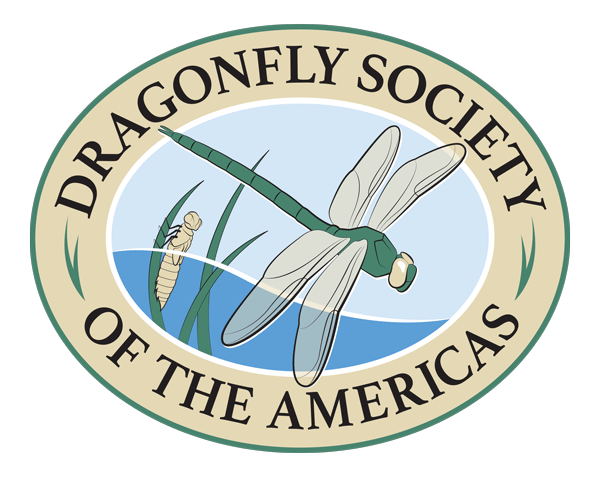October Species of the Month: Black Petaltail (Tanypteryx hageni)
October’s DSA Species of the Month is the Black Petaltail (Tanypteryx hageni). The Petaltails (so called due to the broad, flat claspers of males that resemble flower petals) are a group of 11 species found in Australia, New Zealand, Chile, Japan and North America. The Black Petaltail—a mid-sized dragonfly, 5.3-5.9 mm (~2 inches) in length–is found from southern British Columbia in Canada, through western Washington and Oregon, and into California as far south as Sequoia National Park. They are associated with many mountain ranges in these regions: the Cascades, Olympics, Coast Range, Klamaths, and Sierra Nevadas. Their habitats are often found at mid-elevations, 3,000-4,000 ft (900-1200m), but can reach 8,000 ft (2400 m), especially in the southern end of their distribution. Here we’ll explore the ecology and life history of these dragonflies with DSA President Chris Beatty.
A Black Petaltail (Tanypteryx hageni) adult perched on a cobra lily (Darlingtonia californica). Photo by Cary Kerst (Probably Josephine County, Oregon 2009).
In a Hole in the Ground…
In a hole in the ground there lived a…dragonfly? Not exactly the way that J.R.R. Tolkien begins The Hobbit, but true enough for our topic today, the Black Petaltail (Tanypteryx hageni).
Over the last 15 years I spent many summer days exploring the seeps and wet meadows of northern California and western Oregon looking for this species. My search often begins by looking for holes in the ground.
A view of Cherry Hill Meadow in Lassen National Forest, Butte County, California. Wet meadows like these are a primary habitat for Black Petaltail (Tanypteryx hageni) nymphs. Photo by Christopher Beatty, 2010.
Petaltails are an odd group of dragonflies in many ways. Their nymphs, while aquatic like other dragonflies, live in seepy stream banks and sunny meadows, where springs keep the ground saturated with cool water. If you take a walk across these meadows be prepared to get your feet wet; each footfall will land with a ‘squelch’, and your footprint will rapidly fill with water. You will also find thick layers of moss, and often carnivorous plants like sundew (Drosera sp.) or the cobra lily (Darlingtonia californica). As you scout around, bent over to see the ground clearly, you will from time to time find a small round opening. That’s the entrance to the burrow home of a Black Petaltail nymph.
Like most other petaltail species, Black Petaltail nymphs dig and maintain these burrows throughout their lives, clearing them out and expanding them as they grow larger. Depending on the type of substrate, these burrows may go down as much as half a meter (about one and a half feet), and sometimes have small chambers at the bottom. The burrow fills with water from the saturated soil, so the nymphs are still aquatic. Two other petaltail species, the Gray Petaltail (Tachopteryx thoreyi) and the Chilean Petaltail (Phenes raptor) appear to have given up this burrowing behavior. They still live in fens and seeps, under leaves and other detritus at the surface, coming awfully close to being terrestrial nymphs.
Up-close view of a Black Petaltail (Tanypteryx hageni) burrow entrance. The entrance is approximately 1 cm in diameter. Photo by Christopher Beatty, 2010.
A Black Petaltail (Tanypteryx hageni) nymph recently extracted from its burrow by Katie Harding. Photo by Christopher Beatty, 2010.
Another odd thing about Petaltails is how long they live. Most species are thought to spend several years as a nymph. The Black Petaltail is estimated to take five years from egg to adult, a very long time indeed for a dragonfly! At the end of that long period of time they emerge like other dragonflies, flying for six to eight weeks or possibly more in a favorable season. The adult Black Petaltail is black-brown with yellow markings on the thorax and abdomen, a cream face, and brown eyes set apart on its head. Petaltails like to land on light colored surfaces, like boulders or old dried logs. They are very docile, and will often settle on your hat, shirtsleeve or net, especially if you are wearing light colored clothing. They are often observed landing on tree trunks, especially later in the day.
A Black Petaltail (Tanypteryx hageni) adult catching a ride on the author’s backpack. Photo by Christofer Brothers, 2023.
A Black Petaltail (Tanypteryx hageni) adult finds another good perch. Photo by Christofer Brothers, 2023.
The Petaltails are suggested to be a very old family, as much as 160 million years, and the Black Petaltail is estimated to have separated from its sister species in Japan (Tanypteryx pryeri) around 70 million years ago, making them very old species—even older than the mountains they live in. Maybe even older than old Smaug, the great dragon of Middle Earth, himself.
Black Petaltail (Tanypteryx hageni) adult perched on a tree trunk. Photo by Ethan Tolman, 2023.
Our October contributor, Christopher Beatty, is an evolutionary ecologist who works with dragonflies and damselflies. His research has taken him to sites in the U.S. and Canada, as well as Spain, Portugal, Kenya, Peru, Colombia, the Fiji Islands and New Zealand. He is a co-editor of the 2 nd edition of Dragonflies and Damselflies: Model Organisms for Ecological and Evolutionary Research with Oxford University Press. He is also a Visiting Scholar at Stanford University. He lives in California with his wife Katie and their son Thomas.








